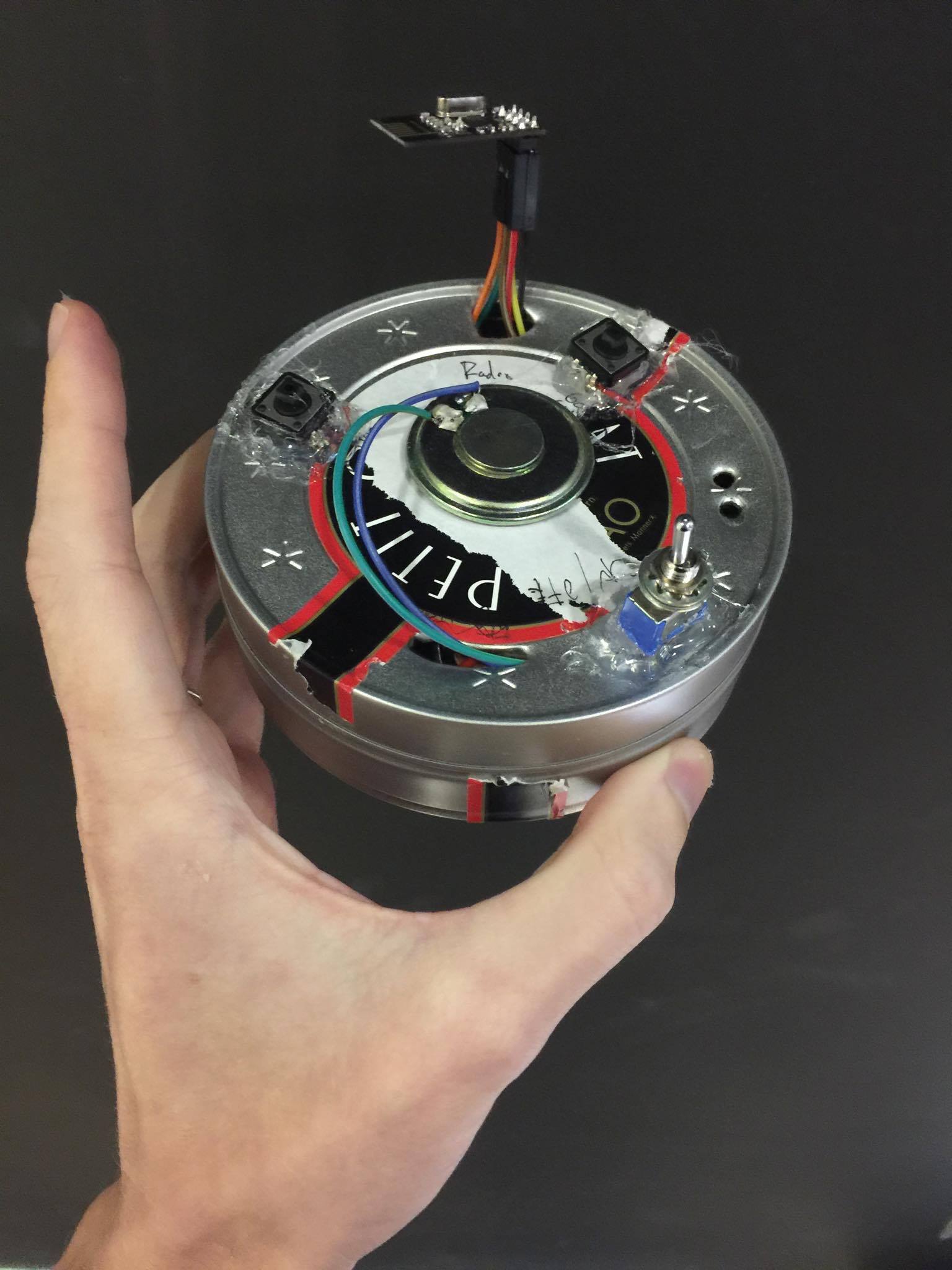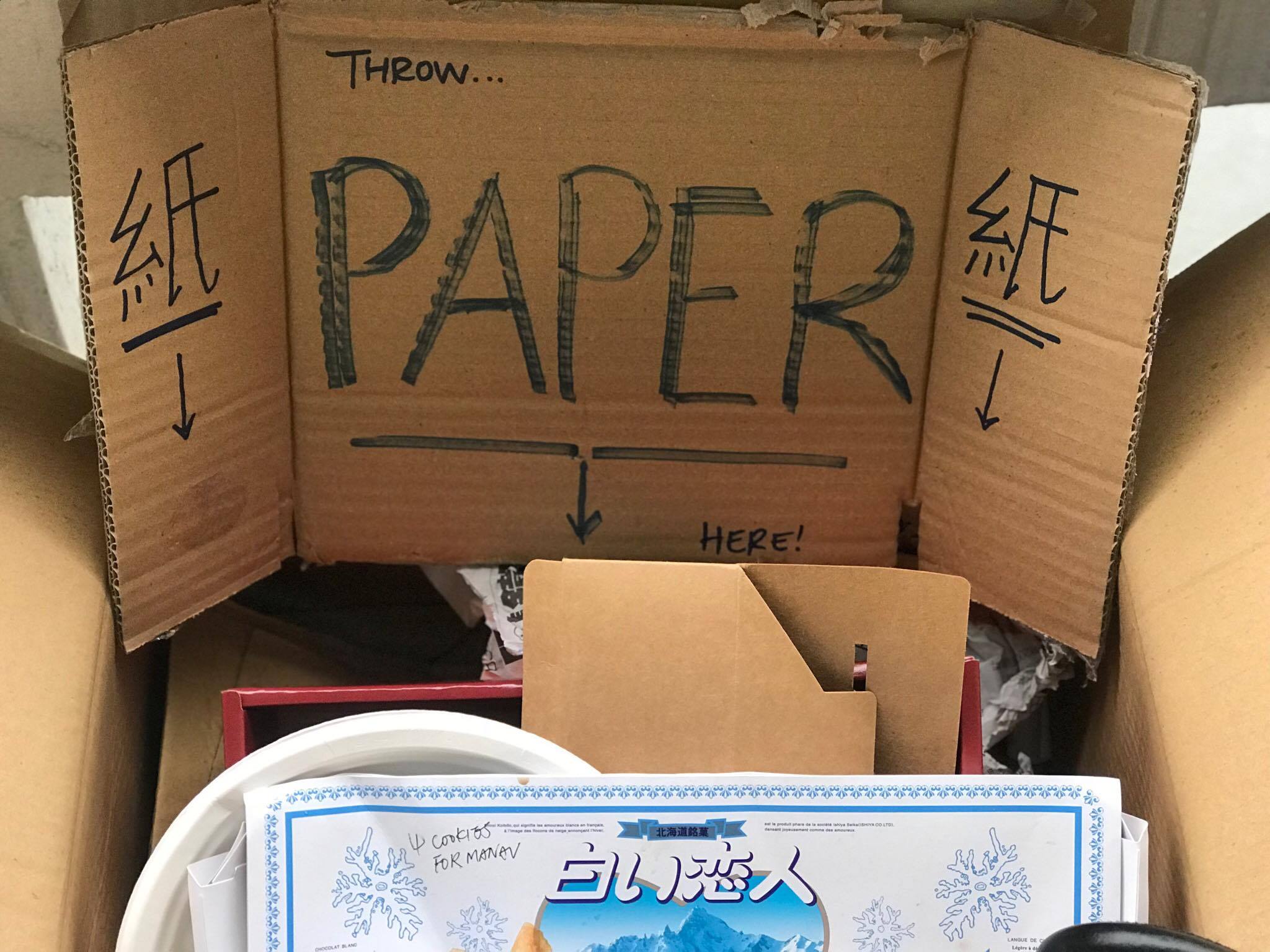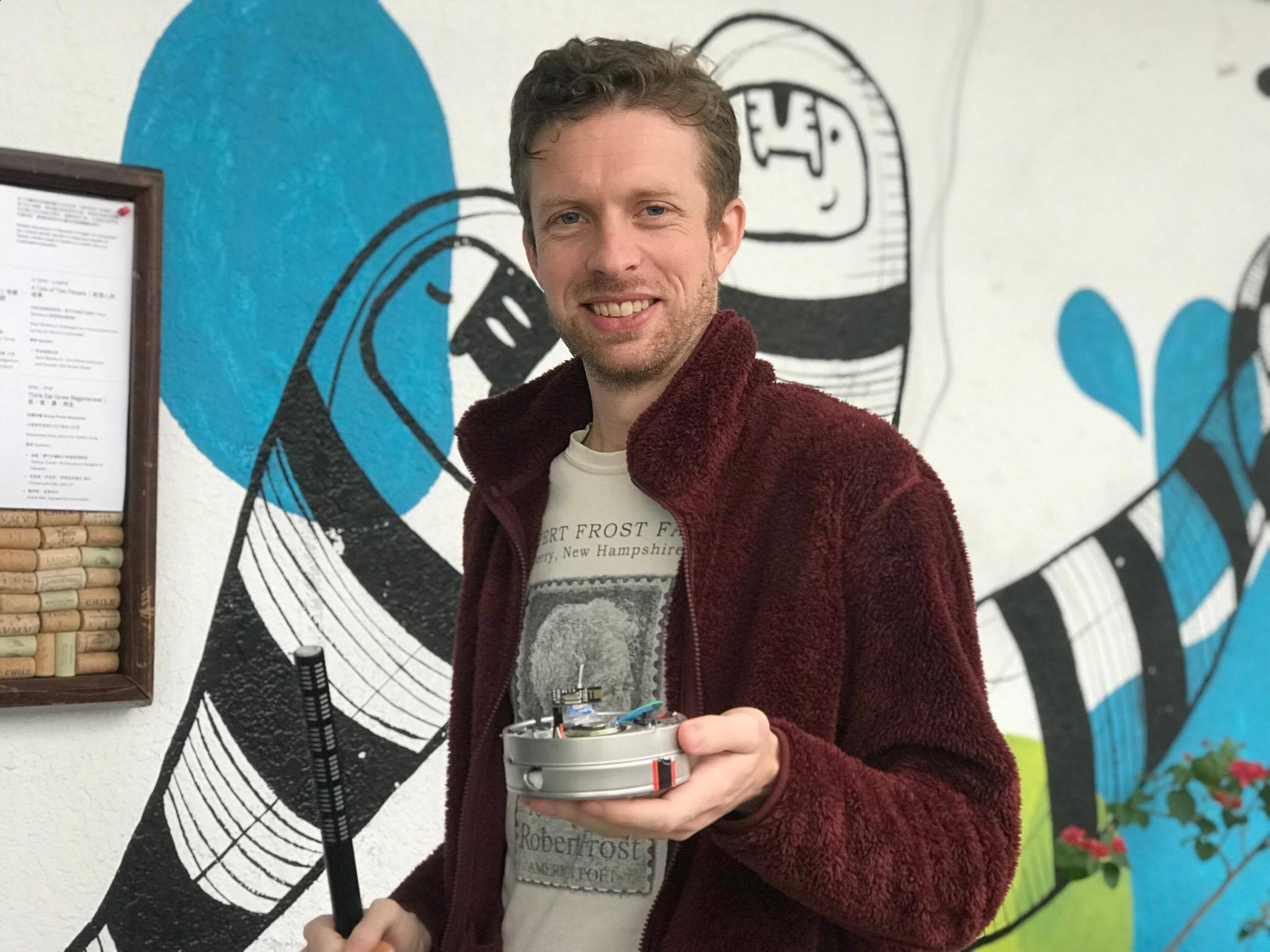Sound Footprint: Trash Remix
Sound Footprint is a collaboration with Lilly Sedaghat, a Fulbright National Geographic Digital Story teller. She is focusing on waste management practices (or lack thereof) in Taiwan, so we conceived of this public installation and workshop to experience waste as sound and its transformation as some kind of extended sensation and contemplation of it. Generally, I want to rearrange people's senses around, and this project was an example of that. We see trash, look away. Read about trash as a problem, or recycling as a solution, and look away. But hearing garbage is a little different of an idea - if you could hear its presence all the time while it was there in the bin or on the street corner or from some ditch off the highway... where does it go? Is it recycled? Burnt? Buried? Floating in the sea? Disintegrating? Becoming One with the Universe? Of course we can't know, but we can listen and stretch sounds and senses so.



Food-Chained
Food-Chained (Or, A Premonition of the Indigestion of the Last Night) is the first of a series of interactive food-chain themed works to be projected onto plates. The participants sit down at the table and a scene involving them unfolds on their plate. They may interact to affect the outcome, or react instinctively, but the ultimate needs and results are still somewhat out of their hands – like a food-chain. Whether we like it or not (and most of us do), we must eat to survive, other things also must eat to survive, and therefore things must be eaten in order for us and other things to survive. Most of the time many of us don’t think much of this, but sometimes conflicts arise. We may become aware of ethical issues, environmental issues – we may decide we like an animal in a different way and don’t want to eat it, we may think we are too fat or skinny, we might get food poisoning, etc. But eat and eat we must regardless. Food-Chained is thus a platform (actually a plate) to digest these divergent thoughts, feelings, instincts and needs in a metaphysical way.
Head of Security
Head of Security is a public interactive art installation that debuted August 6th, 2017 at Lutetia Café in Taipei, Taiwan. It was the culminating project of a summer program I directed and was conceived and brought to existence in collaboration with the Taiwanese artist Cheng HsienYu, with completing students contributing their interactive digital artwork. The installation is designed to be recurring as part of the Physical Computing program being offered during the academic year. The nature of the collaboration between Cheng HsienYu and me was that I was responsible for all visual art programming and he was responsible for all mechanical parts and their programming. The impetus of Head of Security was to give students a real installation to learn and work towards that at the same time had a thematic but neutral (until the students gave it direction) artistic purpose: to examine the presence and effect of the ubiquitous surveillance in public and commercial spaces in Taipei. Presumably, upwards of 99.9% of video captured of citizens shows no wrongdoing (and Taipei has a very low crime rate), so perhaps we could make use of all the excess footage artistically while also calling awareness to the act surveillance itself. For it is not too difficult to see surveillance, despite its ostensible purpose of safety, as a form of state and private enterprise voyeurism that is carried out constantly on a largely unsuspecting public. We found a sympathetic bakery owner who not only permitted us to use his café for the installation, but also allowed us to 3D scan and print his face, attach it to horizontal and vertical servo motors. We then equipped this robot in his likeness with a webcam and facial tracking, allowing it to look directly at customers and follow them with its surveilling gaze. Meanwhile, inside the café the video footage was displayed in 4 panes on a television, with each pane featuring a different student’s visual art programming that processed the surveillance video of the customer for different purposes, some political, some aesthetic and some otherwise. To keep things interesting and to include all students’ work, every 30 seconds the 4 panes refreshed with a different visual art program. This was all done live-streaming in real time with no pre-recorded video.